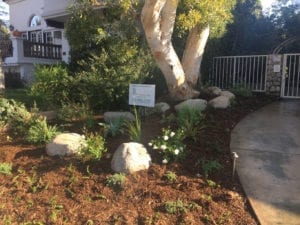When it comes to cultivating a vibrant and thriving backyard garden in Los Angeles, one of the fundamental factors to consider is the type of soil you’ll be using. Given the city’s unique climate and environmental conditions, selecting the right soil type is crucial for ensuring optimal growth and health of your plants.
In this comprehensive guide, we delve into the eight most suitable types of soil for growing plants in a Los Angeles backyard. From understanding the essential characteristics of each soil type to learning how to maintain a healthy soil environment, this article equips you with the knowledge you need to create a flourishing garden oasis in your very own home backyard.

1. Sandy Loam Soil
Sandy loam soil, characterized by its excellent drainage and aeration properties, is an ideal choice for many backyard gardeners in Los Angeles. Its sandy texture allows water to pass through easily, preventing waterlogging, while the presence of organic matter helps retain essential nutrients for plant growth. Considered well-suited for drought-resistant plants, sandy loam soil can be enriched with compost and organic mulches for improved water retention.
2. Clay Soil
Despite being less common in Los Angeles, clay soil can still be found in some areas. While its high nutrient content is beneficial for plant growth, the compact nature of clay can hinder proper drainage and root development. To make clay soil more suitable for gardening, incorporate organic matter such as compost and peat moss to enhance its drainage and prevent it from becoming overly waterlogged.
3. Silt Soil
In certain parts of Los Angeles, silt soil may be prevalent. With a finer texture than sand and clay, silt soil is known for its moderate drainage and nutrient retention capabilities. However, it can become easily compacted, necessitating regular aeration and the addition of organic matter to promote healthier plant growth. Mixing silt soil with compost can help improve its overall structure and fertility.
4. Sandy Soil
Often found in coastal regions of Los Angeles, sandy soil offers excellent drainage and good aeration, making it suitable for plants that thrive in well-drained environments. However, its poor water and nutrient retention capabilities require regular supplementation with organic matter and mulches. Adding compost and aged manure to sandy soil can significantly enhance its ability to retain moisture and nutrients.
5. Peat Soil
While not as common in Los Angeles, peat soil is known for its acidic nature and high water retention capacity. It is essential to be cautious when using peat soil for gardening, as its high acidity may not be suitable for all plant species. Mixing peat soil with other soil types, such as sand or loam, can help balance its pH level and improve its overall nutrient retention and drainage properties.
6. Chalky Soil
In some areas of Los Angeles, chalky soil, characterized by its high pH level and rocky texture, can pose challenges for gardeners. It tends to have poor water retention capabilities and may lack essential nutrients necessary for plant growth. Amending chalky soil with organic matter, like well-rotted compost, can help improve its fertility and structure, making it more conducive to plant cultivation.
7. Loamy Soil
Considered one of the most favorable soil types for gardening, loamy soil consists of a balanced mixture of sand, silt, and clay, offering excellent drainage, aeration, and nutrient retention properties. In Los Angeles, areas with loamy soil are ideal for a wide variety of plants, requiring minimal amendments to support healthy growth. Regularly incorporating organic matter into loamy soil can further enhance its fertility and promote optimal plant development.
8. Saline Soil
In some coastal areas of Los Angeles, saline soil, characterized by its high salt content, can present challenges for plant growth. Its excess salt content can hinder the uptake of essential nutrients by plants, leading to stunted growth and reduced yields. Implementing strategies such as leaching and regular application of gypsum can help mitigate the adverse effects of salt accumulation, making it possible to cultivate certain salt-tolerant plant varieties.

Cultivating a thriving garden in your Los Angeles backyard requires careful consideration of the soil type and its specific properties. By understanding the unique characteristics of various soil types and implementing appropriate soil management techniques, you can create an optimal environment for the healthy growth of a diverse range of plants. Whether it’s sandy loam, clay, silt, sandy, peat, chalky, loamy, or saline soil, each type presents its own challenges and opportunities, demanding tailored approaches to ensure the successful cultivation of a flourishing garden in the vibrant landscape of Los Angeles.
To explore more ideas, make sure to visit 12 Helpful Gardening Tips and Tricks.


